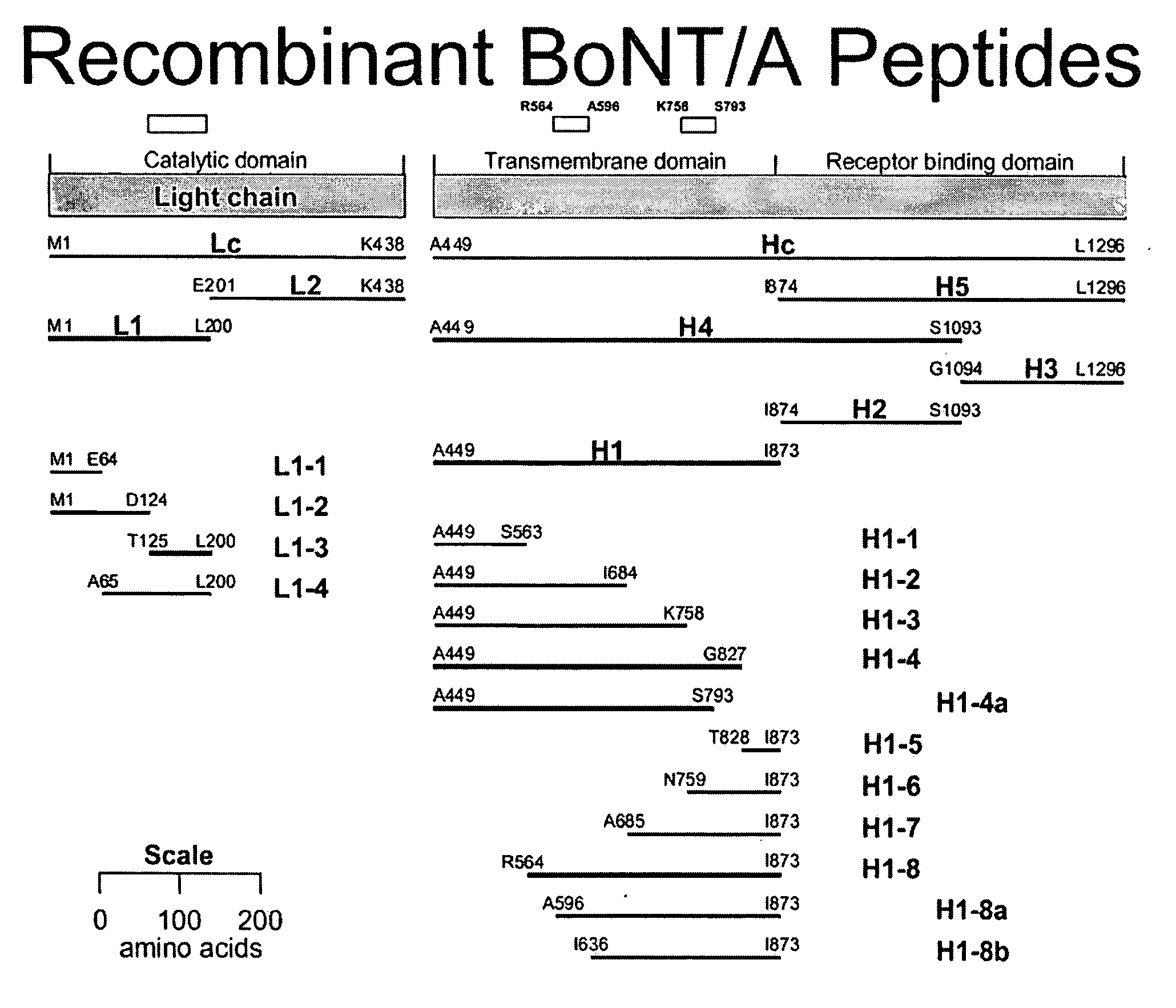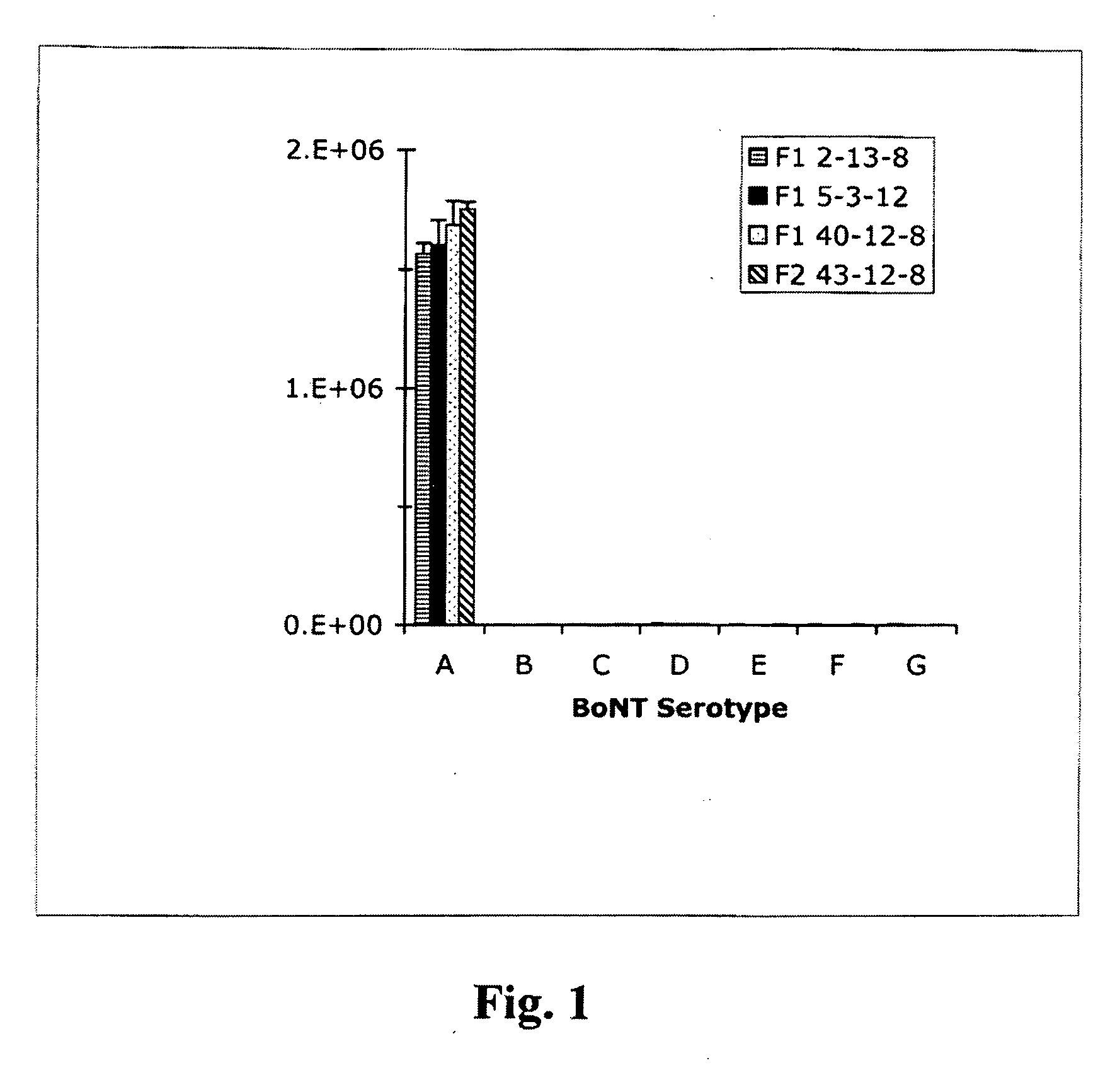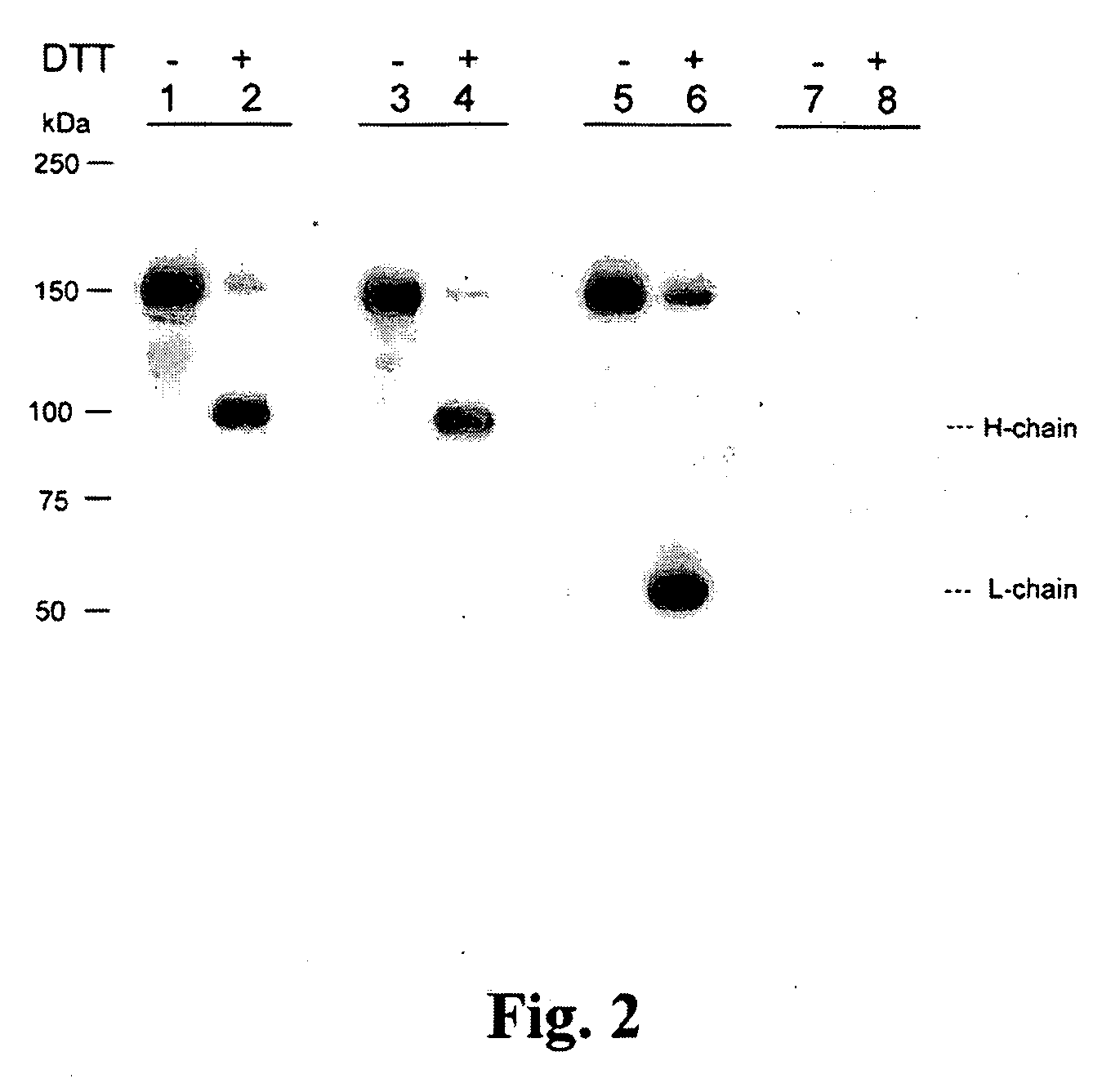High-Affinity Monoclonal Antibodies for Botulinum Toxin Type A
a monoclonal antibody, high affinity technology, applied in the direction of immunoglobulins, peptides, instruments, etc., can solve the problems of lack of specificity and time-consuming bioassays, and achieve the effect of increasing the sensitivity of the assay
- Summary
- Abstract
- Description
- Claims
- Application Information
AI Technical Summary
Benefits of technology
Problems solved by technology
Method used
Image
Examples
example 1
Monoclonal Antibody Production
[0053]Iscove's modified Dulbecco's minimal medium, Invitrogen #Sigma (#1-7633), containing NaHCO3 (36 mM), glutamine (2 mM), and fetal calf serum (5%) (cHM) was used to grow SP2 / 0 mouse myeloma cells and all hybridoma cells produced in these studies. Hybridomas were selected following cell fusion using HAT selection medium prepared by adding hypoxanthine (100 μM), aminopterin (0.2 μM), and thymidine (8 μM) to complete hybridoma medium. Macrophage conditioned media (MΦCM) was prepared as described (Sugasawara et al. 1985).
[0054]Female Balb / cJ mice (Simonsen Laboratories, Gilroy, Calif.) were housed in the institutional small animal facility under AAALAC standards and all protocols were approval by the institutional animal care and use committee. Mice were immunized (2-week intervals) by intraperitoneal injection (IP) of 100 μL of BoNT serotype A toxoid (List Laboratories, Cat # 133) prepared in RIBI adjuvant as suggested by the manufacturer. Following th...
example 2
Screening / ELISA Methods
[0056]Sera from immunized mice and supernatants from the cell fusion plates were screened using a direct binding ELISA. Microtiter plates (Nunc MaxiSorp Black) were rinsed with reverse osmosis (R.O.) water and then were coated with BoNT by incubating 100 μL / well of a 0.2 μg / mL solution of BoNT / A in 0.05M Carbonate Buffer, pH 9.6 overnight at 4° C. The toxin was aspirated and non reacted sites blocked by adding 400 μL / well of a 5% NFDM-TBS-0.05% TWEEN® 20 (TBS-T) solution and the plates were incubated for 1 hr at 37° C. The plate was then washed 3 times with 0.05% tween-water. Next sera or cell culture supernatant was added (100 μL / well) and the plate incubated at 37° C. for 1 hr. Plates were again washed (3×) and 100 μL / well of a 1 / 5000 dilution of peroxidase-conjugated goat anti-mouse sera (Sigma, St. Louis, Mo.) was added and the plates incubated for 1 hr at 37° C. The plates were then washed 6× with 0.05% solution of Tween-20 prepared in R.O. water. Freshly...
example 3
Isolation of Serotypes / Binding Affinity of Mab's
[0058]Toxins were separated using 4-20% polyacrylamide gels (PAGEgel Inc., San Diego, Calif.) as recommended by the manufacturer. Samples were suspended in electrophoresis sample buffer and 10 μL containing 100 ng of protein were loaded into each well and separated by electrophoresis at 200 V (constant). Following electrophoresis proteins were electrophoretically transferred to PVDF membranes using a PAGEgel transfer cell as recommended by the manufactured (180 mA constant for 90-120 min). Filters were blocked with 3% NFDM-PBS-0.05% tween buffer (PBST) for 1 hr at 22° C. on a rocking platform The membranes were then washed 3× for 5 min each (with rocking) in PBST, primary anti-toxin antibody was added (1 μg / mL) and the membranes incubated overnight at 4° C. The membranes were again washed 3× for 5 min each, Peroxidase conjugated goat anti-mouse IgG (whole molecule) antiserum (Sigma, St. Louis, Mo. # A4416) diluted 1:50,000 in PBST and ...
PUM
| Property | Measurement | Unit |
|---|---|---|
| time | aaaaa | aaaaa |
| pH | aaaaa | aaaaa |
| binding affinity | aaaaa | aaaaa |
Abstract
Description
Claims
Application Information
 Login to View More
Login to View More - R&D
- Intellectual Property
- Life Sciences
- Materials
- Tech Scout
- Unparalleled Data Quality
- Higher Quality Content
- 60% Fewer Hallucinations
Browse by: Latest US Patents, China's latest patents, Technical Efficacy Thesaurus, Application Domain, Technology Topic, Popular Technical Reports.
© 2025 PatSnap. All rights reserved.Legal|Privacy policy|Modern Slavery Act Transparency Statement|Sitemap|About US| Contact US: help@patsnap.com



